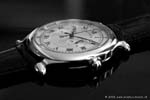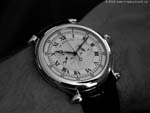The
X-Files
The Quest for a Mechanical Rapprochement of Quartz-Accuracy
An inside report of De Bethune SA, La Chaux l'Auberson
by Magnus Bosse, November 2006
Part
1
click on small images to view full-size ones!
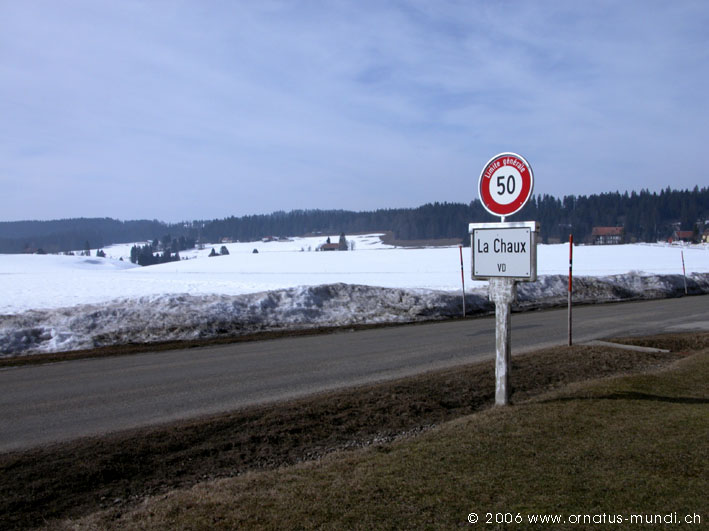
1.
Introduction
There is no doubt: the watch industry is enjoying a huge boom right
now. Since several years now. At one day, the
fine
watch made the transition from a collector's piece into the mainstream
(at least more or less), attracting a huge and diverse audience. Watch
manufacturers helped fostering the hausse
with self-confident "bling" advertising campaigns, testimonials
and sponsorships. Now, this might have created a problem, as a significant
percentage of the newly won customers are "customers by
trend",
riding on a fashion wave, and might not necessarily be attracted by
the technical aspects of watches, the heritage of a company or
the value amongst collectors. Thus, these groups may just move to
the next hot thing soon. The challenge now is how to induce them
to continue buying watches. After all, the watch manufacturers
invested heavily to increase production in a quest to satisfy the
growing demand. On the other side, the watch connoisseurs have since
years urged the manufacturers to go for in-house made movements and
to thrill them with new proprietary technical solutions, e.g. escapements,
which may be not overheard.
If one tries to interpret the novelties presented at this year's
watch shows in Basel and Geneva, the watch manufacturers decided for
a one-fits-it-all, to develop most out
there watches, sporting
highly unconventional escapements or at least new materials used in
standard designs, packed in designs that reveal a strong desire for
uniqueness, and above all accompanied with remarkable complications.
Nothing against a novel escapement design! The ubiquitous Swiss lever
escapement is now 250 years old
(the invention of the lever escapement is attributed to Thomas
Mudge (1754), and its modern form was developed by subsequent workers
including Breguet and Massey), and improvements in terms of accuracy,
precision, positional and thermic consistency or serviceability are
due. Again, not much happened over decades until Omega introducted
Dr. George Daniel's milestone Co-axial escapement several years ago.
This event obviously shattered the watchmaking industry, and only in
the very recent years a true fireworks of novel developments for the
timekeeping heart of a mechanical watch was ignited. There were novel
escapement designs (such as AHCI member Paul Gerber's proprietary
one only employing diverging forces (reported on
this site), Jaeger-LeCoultre's Elipse Isometer and Audemars
Piguet's Robin inspired new escapement), novel materials used in
hairspings, balances or pallets (e.g. independent watchmakers like
Kari Voutilainen in his new balance, H. Moser using solid gold, Patek
and Breguet using Silicium or very recently Blancpain opting for
Titanium in the new Cal.
13R0)
or even combinations of the two approaches (a prominent example would
be Ulysse Nardin's Dual Ulysse escapement, developed with help
of Dr. Ludwig Oechslin).
The
question for me, and certainly to some others, is whether all these
newly presented escapements are true innovations which advance mechanical
watchmaking or whether they remain simply novelties, intended to
attract press coverage and thus to increase sales. A question not
easy to answer, since under the above mentioned circumstances, with
the complexity and the characteristics of the watches it will be
difficult to perform ceteris
paribus analyses
with these escapements compared to the common Swiss lever. I
doubt we will ever see technical data comfirming the superiority of
these new implementations.
This above mentioned list of not exhaustive, and there we are with the topic of this article: a relatively young company only known to a small group of experienced watch enthusiasts. This small manufacturer is a most remarkable one, and chose to remain in silence for most if its short history. I am speaking of De Bethune!
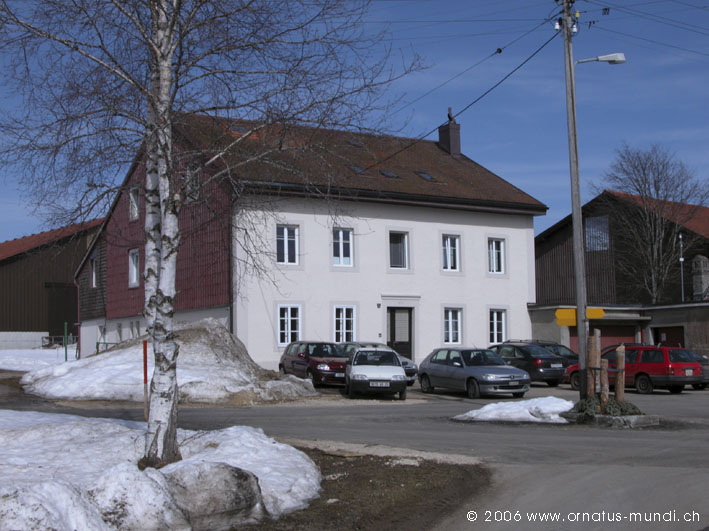
De Bethune is a very young marvel with doubtless pedigree. Founded in 2002 by David Zanetta, a noted watch expert and horse breeder, and Denis Flageollet, a master watchmaker and constructeur. They met each other at the construction bureau THA SA (Techniques Horlogères Appliquées SA), where also watchmakers of world fame like Thomas Baumgartner (Urwerk), François-Paul Journe or Vianney Halter worked at this time. At THA, many of the impressive mechanisms presented by the famous watchmaking houses were born. Flageollet worked as well as the conservator for the watch collection of the Sandoz Foundation, and consequently also for Michel Parmigiani as head of his restoration workshop for antique watches. With this promising background, the stage was set for an ambitious entry into the watchmaking scene.
Situated in the remote village of La Chaux d'Auberson in the Swiss Jura, De Bethune resides in a former rural guesthouse and employs currently 20 watchmakers. As it seems, De Bethune chose to let their products speak for themselves, instead of having large marketing departments creating the spin. When De Bethune first presented a line of watches, one feature was instantly recognisable and sparked my interest: It was the well thought-off design with the now characteristic ogival-shaped lugs. Right from the beginning, De Bethune offered well highly appreciated complications like Chronographs, Perpetual Calendars or Minute Repeaters. All with impeccable manually applied finishing as it befits a serious Haute Horlogerie manufacturer. As an example I would like to show the DB-1, a Chronograph Monopoussoir, with a hand-guilloched dial and white a gold case, only 8mm thick:
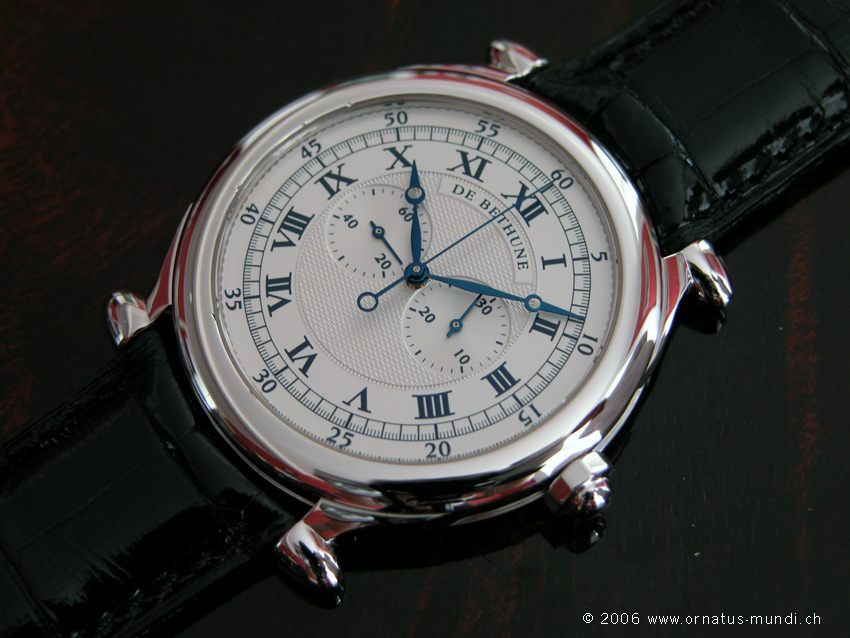
The overall quality, the design, the craftsmanship all speak legends about the attention to the details and the mastery of all aspects of watchmaking. De Bethune produces only 300 to 400 watches per year - amazing what efforts they undertake for such a small number. I was hooked, and first tried to satisfy my curiosity at De Bethune's then retailer in Zurich, but there was not much info to get, to say the least. Finally, I found out about their website, contacted them and asked for the possibility of a visit. Nothing happened over the following months, but then suddenly I got an email by Angela Landone, responsible for De Bethune's press contacts.
So one happy day I found myself in a train to Yverdon-Les-Bains, where Denis Flageollet himself picked me up and drove me over an hour to their premises. There I was already awaited by Mr. Cochet, head of the customer service department. It proved to be a very informative and entertaining visit, a true eye-opener. In fact, as I found out later, I was the very first member of the international watch aficionado community to contact and visit them...
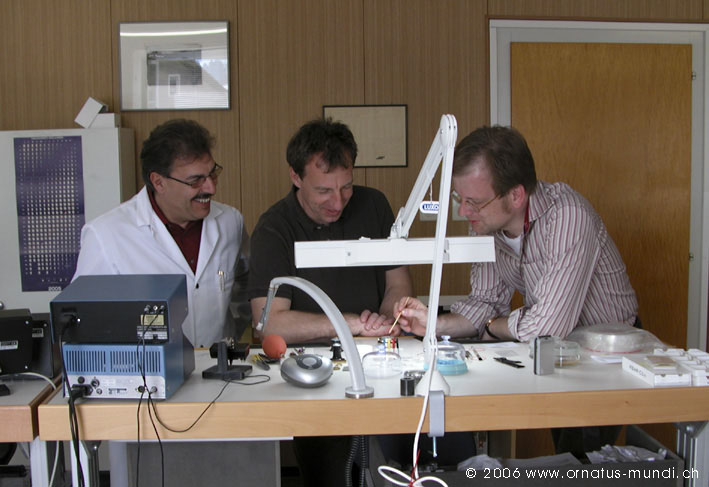
From left to right: Jean-Claude Cochet, Denis Flageollet and the author at the De Bethune manufacture
I was truely blown away by their quiet, serious way to create the finest watches. They constantly improve, seek for new solutions independent of what the great players in this industry do. They are capable of a signifcant in-house work many big brands would be proud of - so please follow me to Part 2 - the chapter which demonstrates how watches are crafted at De Bethune today!

